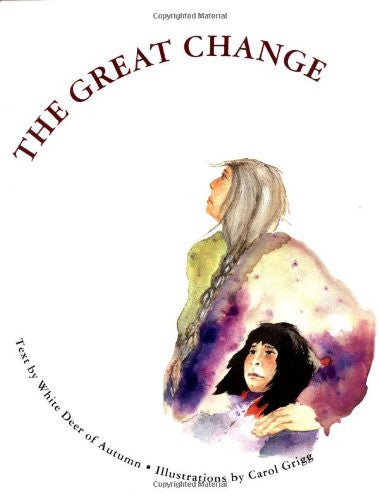-
The Great Change
Beyond Words Publishing
-
$28.45
-
is back-ordered. We will ship it separately in 10 to 15 days.
-
-
Description
This wistful text, based on a Native American tale, ponders the meaning of life and death--reaching the sensible if daunting conclusion that one is impossible without the other. Nine-year-old Wanba helps her elderly grandma to catch and clean fish, "returning what they did not need" to the sea. The dying fish trouble the girl, reminding her of her grandfather's recent death, and she wonders, "Why does everything have to die?" Drawing on the surounding vista of ever-changing nature, Wanba's wise relative speaks of a caterpillar becoming a butterfly, of fish as the food of life for pelicans, of death as nothing more than a change within the great Circle of Life. While the good sense of this message is well taken, the story seems ultimately ponderous for lack of a plot on which to hang its philosophy. Furthermore, empathy with Wanba or her grandmother is diffused as the text wavers between their two viewpoints. Delicate pastel watercolors capture the story's essence on gossamer wings with a pleasing combination of sophistication and childish impressibility. Ages 4-up. Copyright 1992 Reed Business Information, Inc. Grade 3-5-- A gentle and sensitive story about mortality and the interconnectedness of generations and of life-forms that provides a nondoctrinal, reassuring response to a child's questions about the necessity of death. While nine-year-old Wanba and her grandmother work, the girl asks about her recently deceased grandfather. Grandmother's answer involves the fish they're cleaning, the pelicans diving nearby, and the corn grown for humans to eat, fertilized by fish scraps. When a caterpillar happens by, its change into a butterfly becomes part of the explanation. When they dip a cup into a pond, the replenished water and the widening rings become further links to the Great Circle of Life. Grandfather's death returns his body to the Earth and his goodness to the Great Mystery: part, in fact, of Wanba herself, as she ``changes'' like the butterfly. Grigg's watercolors are spare, with washes of brilliant color (cheering a potentially somber subject) against pure white pages. The characters are not romanticized, but the overall effect is delicate and impressionistic. Despite its Native American orientation, this book belongs more to the literature about death than to the ``Indian lore'' genre. --Patricia Dooley, University of Washington, Seattle Grades 3-6 Copyright 1992 Reed Business Information, Inc.

